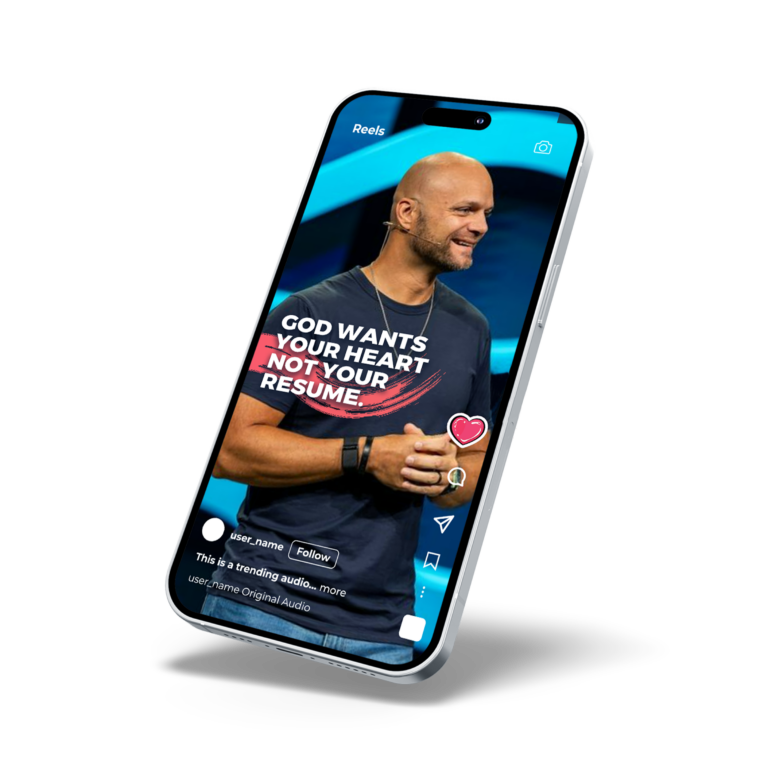Is your church ready for the digital ministry era? As technology continues to weave its way into every aspect of life, church leaders face the crucial task of embracing digital tools to connect with their congregations effectively. Modern spiritual leadership isn’t confined to the four walls of a church anymore, and sticking to traditional methods might mean missing out on critical opportunities to engage with your community. By understanding the significance of digital ministry, pastors and church leaders can adapt to these changes, enhancing their outreach and impact. This post offers insights and tips to help you navigate this new landscape, ensuring your message reaches the hearts of the people you aim to serve.
Embracing Digital Ministry
In today’s fast-paced world, the essence of ministry is evolving beyond traditional means. As screens become our guiding light and social media platforms morph into gathering spaces, the idea of Digital Ministry emerges. It’s not just a trend; it’s a crucial way to connect and grow in faith. Let’s explore what Digital Ministry encompasses and why every modern church leader should care about it.
What is Digital Ministry?
Digital Ministry is more than just a buzzword; it’s a way of bringing church to life online. By weaving together various digital tools and platforms, it creates spaces for worship, evangelism, and community building. Think of it as constructing a virtual church without walls, reaching out as far as the internet goes.
-
Online Worship: This includes live streaming services or recording sermons for later viewing. Congregants can participate from their living rooms and even invite friends from afar to join.
-
Digital Evangelism: With social media and email campaigns, churches can share their message more widely than ever. It’s about meeting people where they are, which nowadays, is often online.
-
Virtual Community-Building: Beyond sermons, Digital Ministry encompasses Bible study groups, prayer meetings, and community discussions through video calls or chat platforms. It transforms a weekly gathering into a daily conversation.
By understanding these components, church leaders can build a comprehensive digital strategy tailored to their community’s needs.
The Importance of Digital Presence
Why have a digital presence? Simply put, it’s where the people are. As more of life shifts online, the church must too. Imagine the web as a modern-day mission field, brimming with opportunities to engage and inspire.
A strong digital presence isn’t just optional; it’s essential for:
-
Wider Reach: With a website and social media, your message can reach beyond the physical walls of your church. You can touch lives globally, impacting people you might never meet in person.
-
Increased Engagement: A vibrant online community fosters deeper connections. Regular posts, engaging content, and interactive features keep members actively involved in their faith.
-
Accessibility: Not everyone can attend church in person due to distance, mobility issues, or health concerns. Online offerings ensure that everyone has a seat at the table, regardless of circumstance.
Remember, if the church doesn’t embrace digital space, it risks becoming invisible to the next generation seeking spiritual guidance online.
Essential Tools for Digital Ministry
In today’s connected world, digital ministry is no longer optional—it’s essential for reaching and engaging with your congregation. Whether it’s sharing the good news on social media or hosting virtual Bible studies, the right tools can transform your church’s outreach efforts. Let’s explore some of the must-have tools for effective digital ministry.
Social Media Platforms
Social media is like the new town square where everyone gathers. Platforms like Facebook, Instagram, and YouTube allow you to reach beyond the church walls and into the lives of your community.
-
Facebook: Perfect for live streaming services, sharing updates, and creating groups for discussion and support.
-
Instagram: Utilize Stories and Reels to share daily inspiration, behind-the-scenes looks, and highlight events. Instagram’s visual-first format makes it ideal for engaging younger audiences.
-
YouTube: Host sermons, Bible studies, and worship sessions. Post sermon Recaps. It’s a great space for sharing in-depth content that can be accessed anytime.
These platforms don’t just help you share messages; they invite interaction through comments and shares. By going where the people are, you can spark meaningful conversations and foster community.
Video Conferencing Tools
Virtual gatherings have become commonplace, making video conferencing tools like Zoom and Microsoft Teams essential.
-
Zoom: Known for its ease of use, it’s reliable for hosting everything from small group meetings to large webinars. Features like breakout rooms can facilitate smaller discussions or prayer groups.
-
Microsoft Teams: More than just video calls, it integrates with Office 365, allowing for file sharing and collaboration. Ideal for planning sessions or Bible study groups where document sharing enhances discussion.
These tools ensure ministry activities continue smoothly, keeping your community connected even when they’re apart.
Content Creation Software
Creating compelling visual content is key to grabbing attention in digital spaces. Software like Canva and Adobe Spark can help bring your ideas to life.
-
Canva: User-friendly with templates for everything from social media posts to church flyers. With drag-and-drop simplicity, even those with no design experience can create stunning visuals.
-
Adobe Spark: Great for creating graphics, videos, and web pages that are both eye-catching and engaging. It offers customization options to fit the church’s branding style.
With these tools, you can craft engaging content that resonates with your audience, making your digital ministry vibrant and inviting.
By harnessing these digital tools, church leaders can extend their ministry into the digital realm, effectively connecting with people wherever they are. Whether through social media, virtual gatherings, or creative content, the possibilities are vast and exciting.
Tips for Effective Digital Ministry
In today’s fast-moving digital landscape, church leaders are tasked with the mission of reaching their communities in new ways. Embracing digital ministry is essential to staying connected, sharing the Word, and fostering a sense of community online. Here are some key strategies to help make your digital ministry efforts more effective and impactful.
Engage Your Audience
Engaging your audience online is crucial for building a vibrant digital community. Think of your digital ministry like a lively town square, where everyone wants to share their thoughts and ideas. Let’s make that happen with some interaction.
-
Use polls and surveys: Polls are a great way to invite participation and gauge what your community is thinking. Use them during live streams or in your social media posts to encourage interaction.
-
Host Q&A sessions: Set aside time for question-and-answer rounds. Allow your audience to ask about the sermon, upcoming church events, or even general life advice. It’s like having a casual coffee chat but over the internet.
-
Start live chats: During online services or events, facilitate live chat rooms. It’s a space for members to say “hi,” share their thoughts, or offer encouragement. This builds camaraderie and makes virtual gatherings feel more intimate.
By incorporating these strategies, you create an open and engaging environment that invites your congregation to be part of the conversation
.
Consistency is Key
Consistency is like the heartbeat of any successful digital ministry. Without regular updates and content, engagement can quickly fade away. Think of your digital platform as a plant; it needs consistent care and attention to thrive.
-
Post regularly: Develop a posting schedule and stick to it. Whether it’s weekly sermons, daily devotionals, or monthly newsletters, your audience should know when to expect new content.
-
Plan ahead: Use a content calendar to plan out topics, themes, and key dates. This helps in scheduling posts well in advance and maintaining a steady flow of communication.
-
Mix it up: While consistency is important, variety helps keep things interesting. Alternate between different content formats – videos, written posts, podcasts – to cater to diverse preferences.
By being consistent, you’re setting a rhythm that keeps your audience engaged and anticipating more, ensuring your digital ministry continues to grow and inspire.
Challenges in Digital Ministry
In the Digital Ministry world, things are not always as smooth as a Sunday potluck. Like any endeavor, moving ministry online brings its own set of hurdles. It’s not just about uploading sermons or streaming services; it’s about finding ways to connect with people without losing the personal touch that defines community. Let’s dive into some of the unique challenges and how to tackle them head-on.
Technical Issues: Identify potential technical challenges and provide solutions for troubleshooting.
Moving church activities online is no small feat. The tech side of Digital Ministry can feel like navigating a maze at times. From unstable internet connections to glitchy video calls, these hiccups can disrupt the spiritual flow. But fear not, as there are ways to troubleshoot and keep your digital ministry smooth.
Common Technical Challenges:
-
Unreliable Internet: It’s like trying to preach during a hurricane. Ensure strong Wi-Fi signals at your location, and consider having a backup network just in case.
-
Audio Problems: Ever tried listening to static-filled sermons? Invest in quality mics and test them before going live to avoid poor sound quality.
-
Software Glitches: Annoying as a mosquito bite at a picnic, but software updates can help. Always keep your platforms updated and have a tech team ready to jump in if something goes awry.
Solving these issues takes planning. Set up test runs before the actual event. Train your volunteers or staff, just like a choir practice, so they’re ready to tackle any issue that pops up. When you know your tools inside out, you’re less likely to be caught off guard when tech gremlins strike.
Maintaining Authenticity: Discuss the balance between digital outreach and maintaining authentic community connections.
As churches embrace Digital Ministry, the challenge is to maintain genuine connections with the congregation. Can digital ever feel as warm as a shared hug on Sunday morning? Yes, with a bit of creativity.
Tips for Maintaining Authenticity:
-
Interactive Services: Encourage engagement through live chats and Q&A sessions. Make people feel seen, not just talked to.
-
Personalized Outreach: Send personalized messages or small group invitations. It’s like writing a thoughtful note instead of a generic letter.
-
Story Sharing: Inspire members to share their stories and testimonies online. This builds a tapestry of community experiences, making everyone feel connected, even from afar.
While going digital can feel like you’re stretching thin, it’s about finding new pathways to the heart. Keep conversations as open as church doors on a sunny day. Make sure your virtual church is a place where people feel part of the story, not spectators on the sidelines.
Conclusion
Digital Ministry is a must for church leaders who want to stay relevant in today’s tech-driven society. These tools open new avenues for outreach and connection, ensuring that faith communities thrive. By integrating innovative strategies, pastors can resonate with a broader audience.
Take steps today. Explore these tools, implement strategies, and observe the growth in your ministry. Each small change contributes to a larger impact.
What’s next for your church’s digital journey? Dive into these tools and watch your community grow in faith and connection. Remember, the seeds you plant in the digital field can yield a harvest of spiritual growth.





